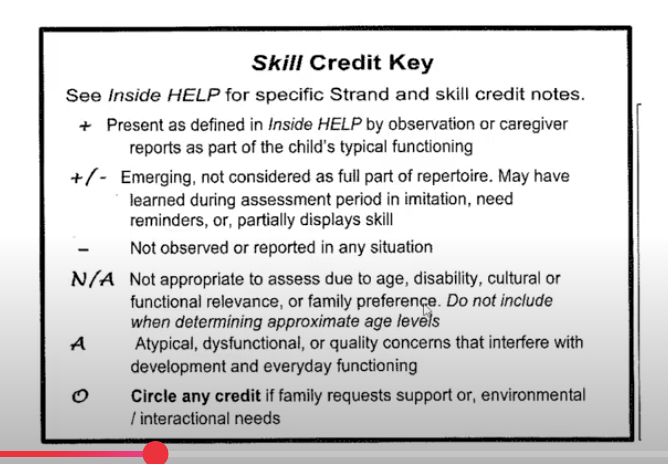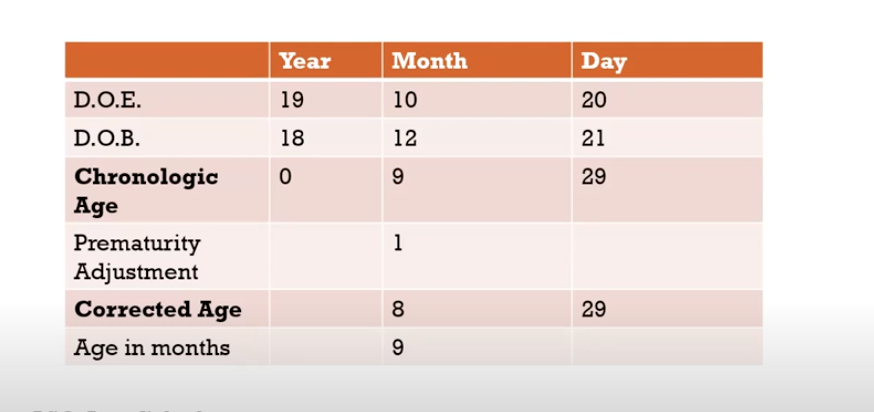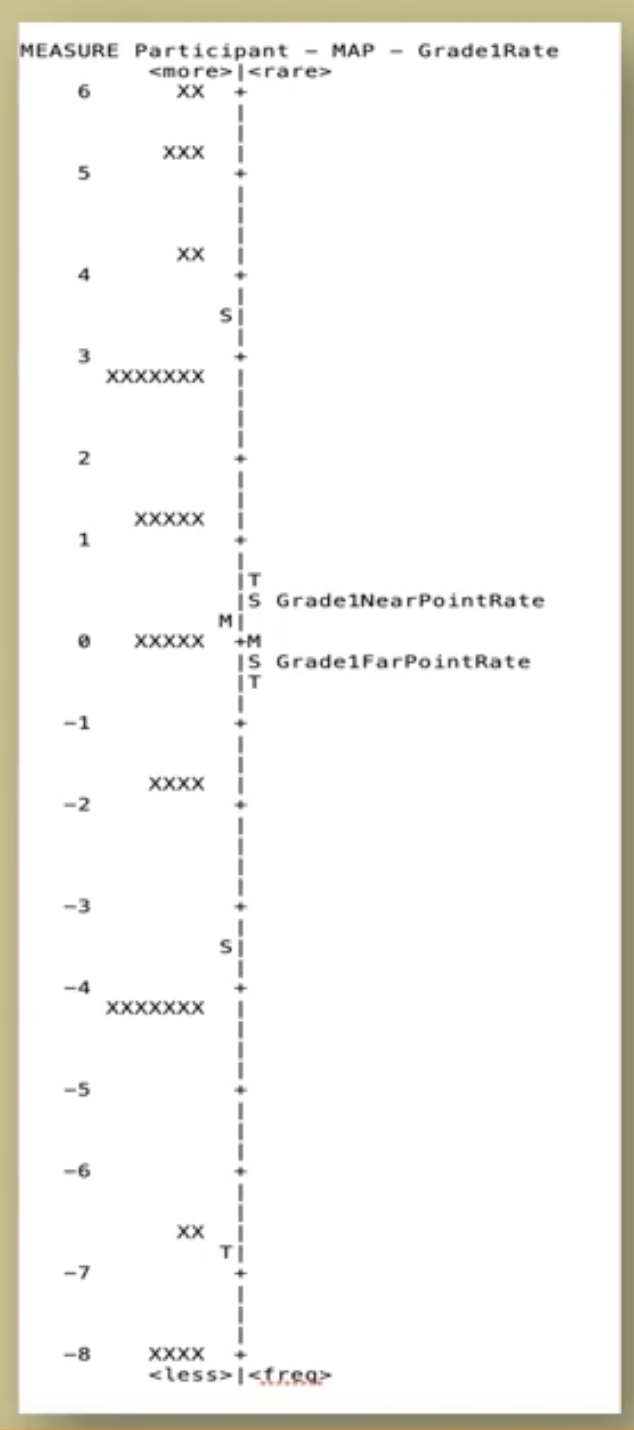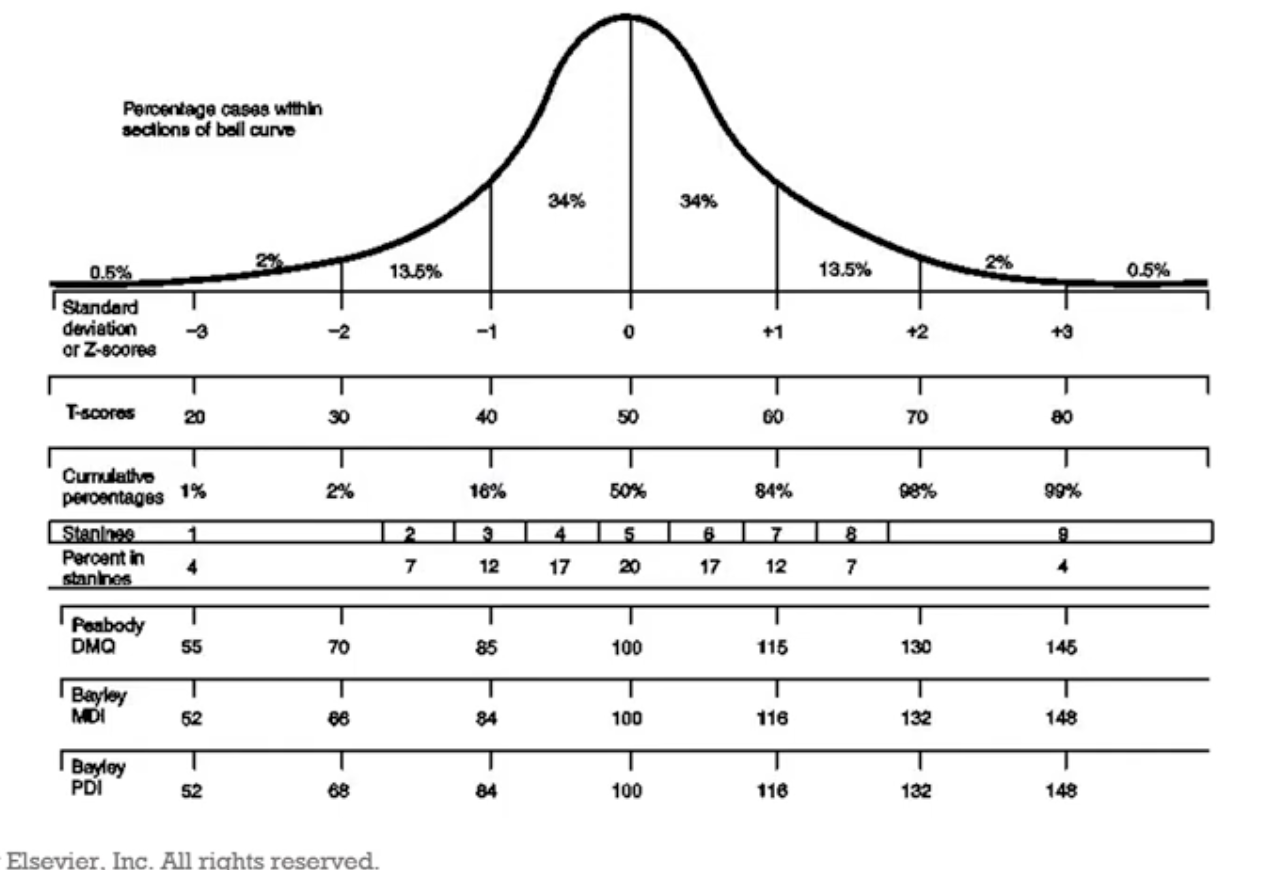async lecture: standardized assessments
1/24
There's no tags or description
Looks like no tags are added yet.
Name | Mastery | Learn | Test | Matching | Spaced |
|---|
No study sessions yet.
25 Terms
purposes of standardized tests
screening
TO ASSIST IN THE determination of a medical or educational diagnosis
document a child’s development, functional, and participation status
aid in planning an intervention program
measure outcomes of programs
types of standardized tests
interview-based
observation-based
performance-based
self or parent-report questionnaire
becoming a competent test user
choosing the appropriate test
understanding the clinical usefulness of the test
learning the test
selecting and preparing the optimal testing environment
administering test items
preparation and skill development for administering standardized assessments
strategic interview
skilled observation
consideration of context and environment
types of standardized tests:
ipsative
standardized procedures to measure outcomes against previous evaluation outcomes
without norms or criteria for comparing results
interview and/or observation-based
types of standardized tests:
norm-referenced
large diverse population
norm or average is derived from scores
performance is compared with a normal sample
one or more areas of behavior
materials and activities are familiar and typical for children of the age group
strict standardized protocols for administration and scoring
types of assessments:
criterion-referenced
performance is compared with a particular criterion or level of performance of a certain skill
the purpose is to determiner what skills a child can or cannot accomplish, not to compare the child with his/her peers
administration and scoring may or may not be standardized
certain scales are both norm and criterion referenced
hawaii early learning profile: help-strands 0-3 plus
curriculum-based assessment utilized to plan family-centered interventions
population-children birth to 3 years old who are delayed, considered “at risk” or have medical conditions/developmental disability
58 concept-based strands (685 skills): cognitive, language, gross motor, fine motor, social-emotional, and self-help
assist professionals in identifying strengths and needs, identify approximate developmental levels, conduct family-directed assessment, recognize environmental factors and caregiver interactions, and develop child and family outcome standards
help scoring

characteristics of standardized tests
test manual
purpose, population, technical information, administration, scoring, and interpretation
fixed number of items
fixed protocol for administration
fixed guideline for scoring

calculating age
corrected age=
chronological age - months and days preterm
technical aspects
occupational therapists must understand technical aspects of standardized assessments to:
analyze and select appropriate assessments, according to the purpose of testing and the child’s age and functional level
interpret and report scores accurately
explain scores and data in terms that are understandable to the caregivers and team working with the child
types of scores
standard scores
Z score
T scores
deviation IQ scores
developmental index scores
percentile
age equivalent
rasch scores
hierarchic ranking of items
expected pattern
range of performance
scale of performance or difficulty
SFA, PEDI-CAT and the School AMPS assessments utilize Rasch methodology
percentile scores and age equivalents
percentage of people in a standardization sample whose score is at or below a raw score
the age at which the raw score is at the 50th percentile
vertical rulers rate

normal bell-shaped curve

test psychometrics
reliability
test-retest reliability
inter-rater reliability
standard error of measurement
confidence interval
technical aspects
validity
construct-related validity
does test discriminate groups?
use of factor analysis to identify test constructs
does the test capture progress in child’s performance?
content-related validity
are skills for the test’s domains adequately represented?
criterion-related validity
interpreting test scores
interpreting the test
did te child’s performance represent typical performance?
do the results concur with parent/teacher report?
are the results complete?
evaluating the clinical usefulness of the test
minimal clinical important difference
minimal detectable change
ethical considerations in testing
examiner competency
client privacy
communication of test results
cultural bias
advantages of standardized testing
well-known and commercially available
common interdisciplinary language
monitor developmental progress
disadvantages of standardized testing
cannot be stand-alone measure
provides only a brief “snapshot” of functioning
test situations are artificial and not a totally accurate interpretation of daily functioning
summary
standardized tests screen children for a variety of performance or conditions; assist in the determination of a medical or educational diagnosis; document a child’s developmental, functional, and participation status; aid the planning of an intervention program; and measure outcomes of programs
OT develops competency in using tests by understanding concepts, familiarizing with test procedures, materials and setting requirements, observing others, and preparing
types of test include ipsative, norm-references, and criterion referenced
standardized tests have procedures for administration, scoring, and interpreting performance
reliability refers to the consistency of scores between multiple raters; validity is the extent to which a test measures what it claims
primary standard scores used are Z and T scores
ethical testing procedures include considering the purpose of the assessment; adapting procedures to match child and family culture, characteristics, and values; adjusting for testing context; understanding test administration, scoring and mechanics and synthesizing information from standardized tests, observations, and interview